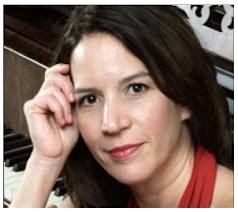|
Choral and Vocal
CANTIAMO SONOMA'S LUSCIOUS A CAPELLA SINGING IN SEASON ENDING CONCERT
by Pamela Hicks Gailey
Sunday, June 8, 2025
Symphony
SRS SEASON ENDS WITH RESOUNDING TA-TA-TA-BANG
by Terry McNeill
Sunday, June 1, 2025
Symphony
YOUTHFUL VIRTUOSITY ON DISPLAY AT USO'S MAY CONCERTS
by Peter Lert
Saturday, May 17, 2025
Symphony
MYSTICAL PLANETS AND LIVELY GERSHWIN ORTIZ AT FINAL SRS CONCERT
by Peter Lert
Sunday, May 4, 2025
Symphony
VSO'S CONCERT MUSIC OF TIME, MUSIC OF PLACE
by Peter Lert
Sunday, April 27, 2025
VOCAL ELEGANCE AND FIRE AT THE 222'S RECITAL APRIL 26
by Pamela Hicks Gailey
Saturday, April 26, 2025
CANTIAMO SONOMA SINGS AN INSPIRED GOOD FRIDAY MOZART REQUIEM CONCERT
by Pamela Hicks Gailey
Friday, April 18, 2025
DRAMATIC SHOSTAKOVICH SYMPHONY CLOSES PHILHARMONIC'S 25TH SEASON
by Terry McNeill
Sunday, April 13, 2025
LARGE COLLEGE OF MARIN AUDIENCE GREETS STOPHER ARTISTRY
by Terry McNeill
Saturday, April 5, 2025
Chamber
FRISSON DELIVERS SHIVERS OF DELIGHT
by Abby Wasserman
Sunday, March 30, 2025
|
 |
 Pianist Elena Casanova |
TCHAIKOVSKY CONCERTO HIGHLIGHTS FT. BRAGG SYMPHONY CONCERT
by Ed Reinheart
Sunday, April 7, 2013
The Symphony of the Redwoods opened its spring concert April 6 in Ft. Bragg’s Cotton Auditorium with a memorable performance of Tchaikovsky’s B-Flat Minor Concerto.
Conductor Allan Pollack and the Symphony presented an ambitious program, opening with Rimsky-Korsakov's "Dance of the Buffoons" from the opera "Snegurochka" ("The Snow Maiden"). Although performed with warmth and feeling, the piece was marred by the violin section failing to finalize its tuning before the performance. Tonic and dominant chordings from the violins were good, but more complex chords were clearly disharmonic.
As is often the case, this problem worsened throughout the first half of the program and constituted a minor annoyance. A pause to re-tune after the Rimsky-Korsakov might have been advisable, but was not undertaken until the intermission, whereupon the problem was belatedly resolved.
Next came Brahms’ Serenade No. 1 in D Major, Opus 11, a rich and complex work that only served to call more attention to the tuning problem. Then came the first trumpet fanfare, shrill in tonality and overbearing in volume. This problem also persisted throughout the first half of the program. The Symphony soldiered on despite these shortcomings, demonstrating excellent dynamic control and an apparent desire to bring things back into focus. The woodwinds seemed particularly helpful here, as were the strings.
Then, in the first movement allegro molto, Mr. Pollock's baton struck the top of a metal music stand with a resounding whack, and with that the orchestra seemed to abandon hope that they could restore the piece to the richness it presumably had during rehearsal. The impression now was of the orchestra merely trying to get through the work as expediently as possible. The serene enjoyment of watching and hearing a complex piece performed well had morphed to the kind of desperate hope that there would be no more glitches.
By the third movement the trumpets had settled down but the out-of-tune quality of the violins remained an annoyance. The strings in general seemed to experience particular difficulty in successfully negotiating long interval leaps into higher registers, but downward intervals were fine. And so the six movements of this wonderful early Brahms stumbled on to a finish.
After intermission Ukiah-based Elena Casanova was the soloist in the intricate and difficult first Tchaikovsky Concerto, 0p. 23, from 1875. Like a sports team that has fallen behind in the first half, the Symphony came out to demonstrate that they could overcome their sonic shortcomings. The violins had re-tuned, and the horns were less shrill, playing with more soothing rounded tones.
Ms. Casanova's performance was impressive and almost flawless. On two occasions she seemed a bit uncertain, but this was only a brief visual impression; the playing did not audibly suffer. The pianist adopted an aggressive approach in this popular work from 1875, and her clean technique seemed to have an ameliorative effect on the Symphony, which now was performing at a much higher level than in the concert’s first half. Coordination and balances between piano and orchestra was good, the ensemble tight and exciting to watch and to hear.
Following the famous ascending piano octave runs in the finale’s coda and a tumultuous ending the audience responded with a standing ovation with three curtain calls for Ms. Casanova and Mr. Pollack’s Orchestra.
|
